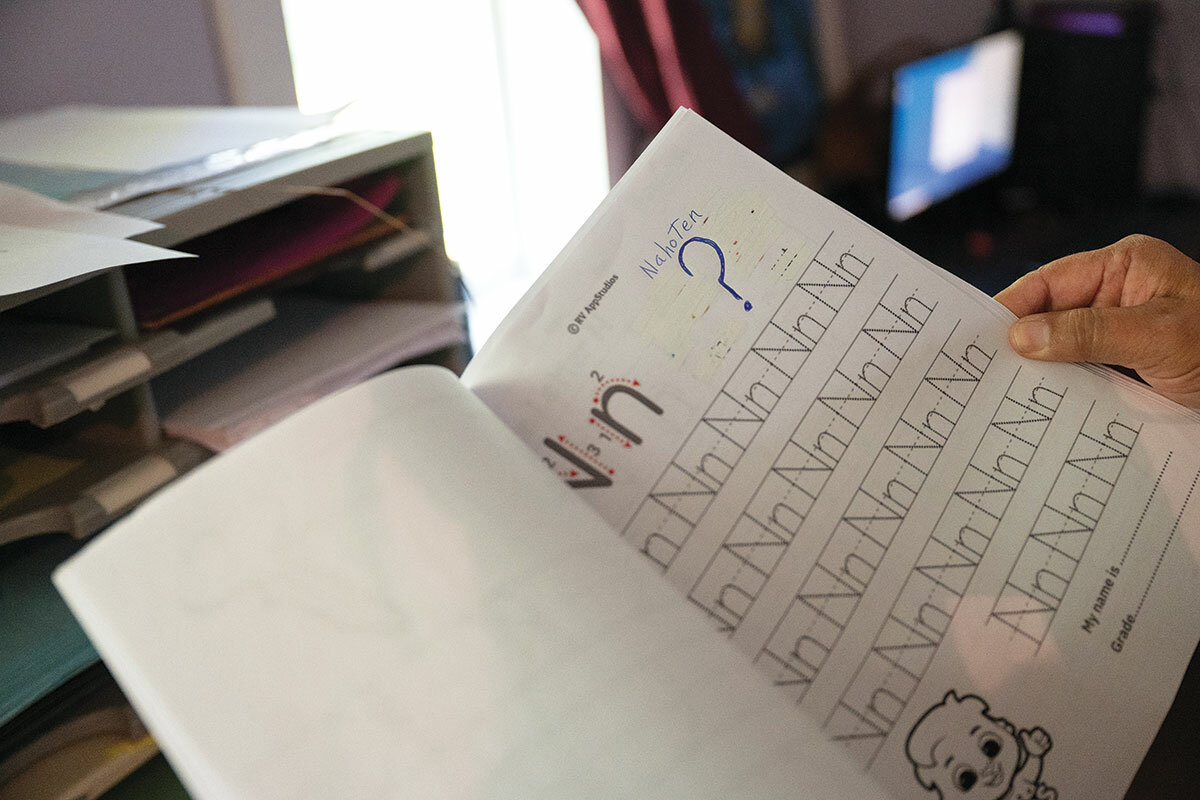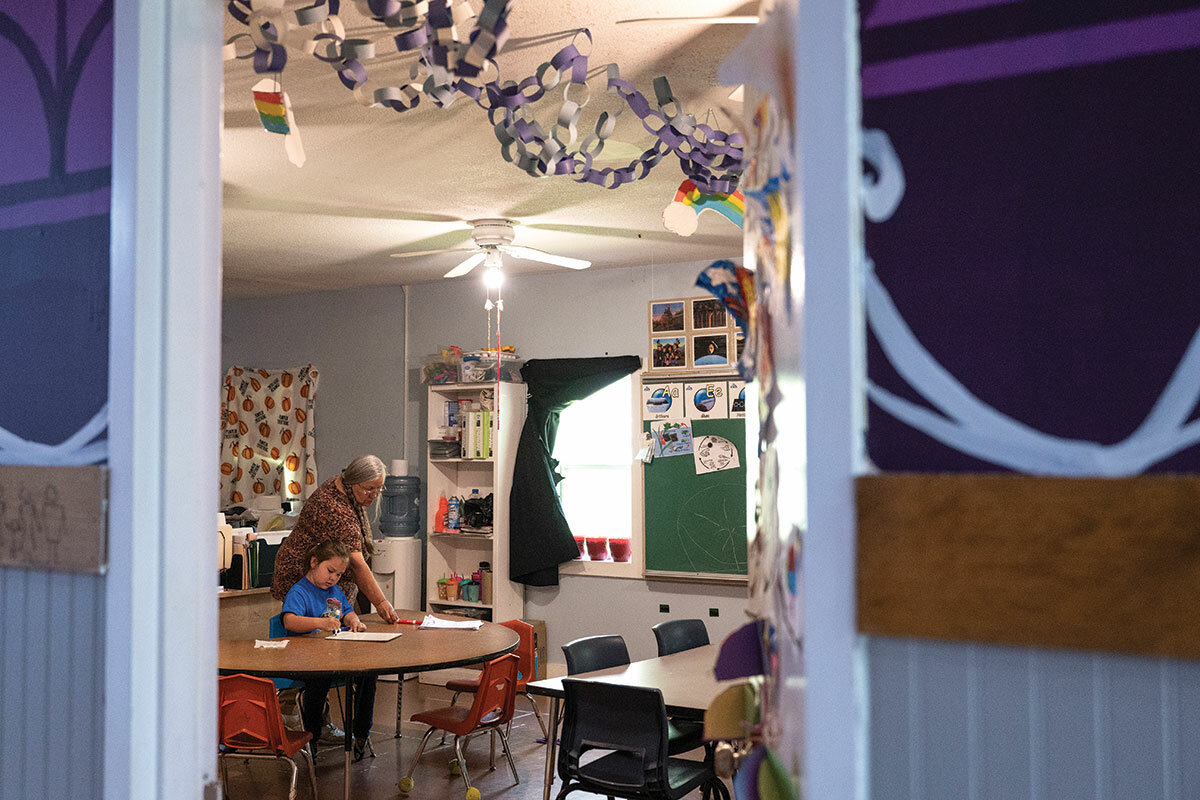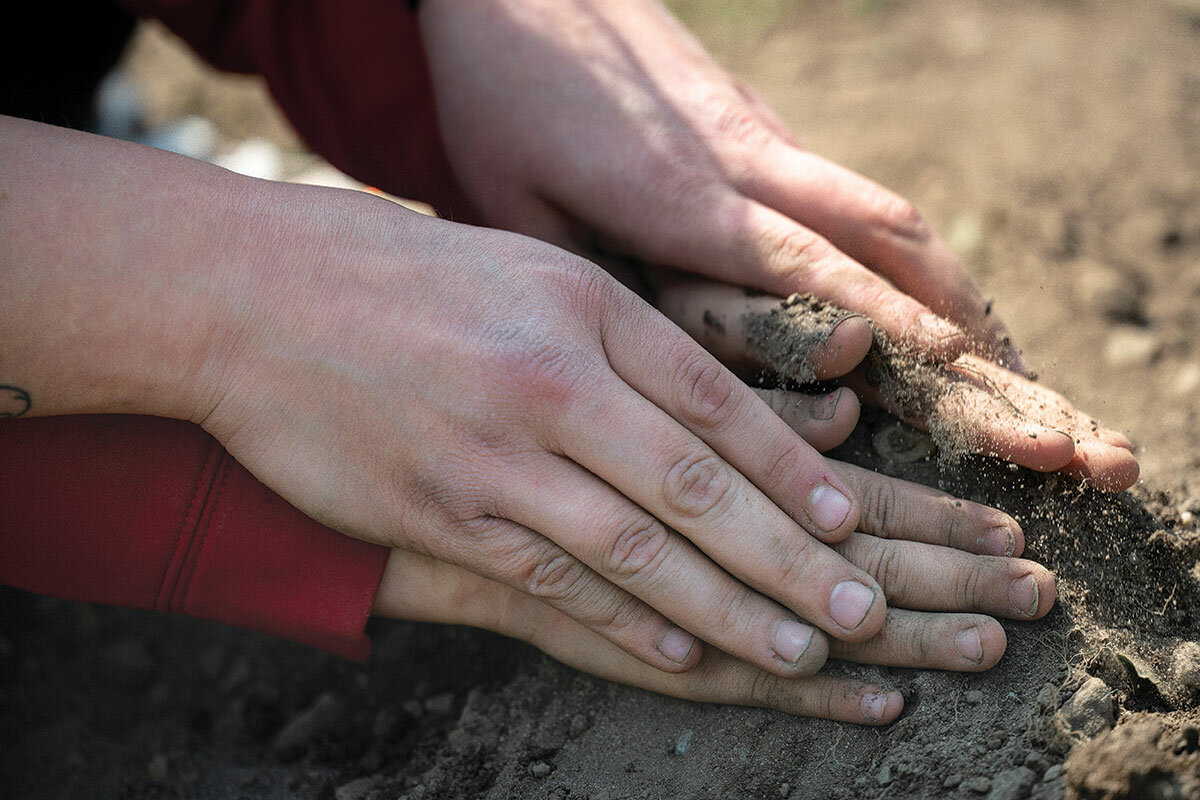A little schoolhouse fights to keep Mohawk language alive
Loading...
| Akwesasne Mohawk Territory
Students and teachers, as well as some parents, sit on two wooden benches running the length of the hallway of their school, organized not by age or grade but by their clans.
They take turns reading from the Ohén:ton Karihwatéhkwen, which translates from the Mohawk language to “Words before all else.” These words, which recognize all life forces in creation, mark the day’s start at the Akwesasne Freedom School.
But the 60-odd students here wouldn’t understand these lessons if it weren’t for this little schoolhouse at the United States-Canada border that for decades has been fighting to preserve Mohawk language and culture. “This makes us who we are, and if we don’t have this, who are we going to be?” asks teacher Kawehnokwiiosthe, whose name in English means “She makes the island beautiful.”
Why We Wrote This
Preserving a treasured language can help sustain a way of life. One school has made that its mission.
“This is more than just language; it teaches us how to live,” she says.
Kawehnokwiiosthe turns to her young pupils, who introduce themselves by their clans – Wolf, Bear, and Eel – and state that they are wisk, or age 5. Every class in K-8 that students take is full language immersion. When a child asks a question in English, Kawehnokwiiosthe responds in Mohawk.
Most parents pay tuition with a quilt sold at an annual auction in August. The school is run as a co-op, where parents do the cleaning (along with the students) and the maintenance work. Students come from American and Canadian sides of the border, but the school has never accepted funds from either government, says Alvera Sargent, who heads the nonprofit Friends of the Akwesasne Freedom School and is one of the last first-language speakers of Mohawk.
That makes her precious, says Waylon Cook, former teacher and now project manager of the school’s nonprofit arm. “We treasure our first-language speakers,” he says. “We treasure them because they are so important for us to continue on our language,” he says. “If you lose it, you can’t go to France like you could to learn French. There is nowhere else to do it but here.”
In 2021, Indigenous leaders in Kamloops, British Columbia, announced that they believed they found the remains of over 200 children on the site of the former residential school there. It shocked Canada, and spurred the search for hundreds more unmarked graves.
For Mr. Cook, the Akwesasne Freedom School has always been the path to justice for Indigenous children abused at residential schools – by being cut off from their language, spirituality, and way of life. The Akwesasne Freedom School offers the opposite of what residential schools did. “This is our own solution,” says Mr. Cook. “They’ve made it so hard to be who we are. And we won’t give up the fight to maintain our language and culture.”









